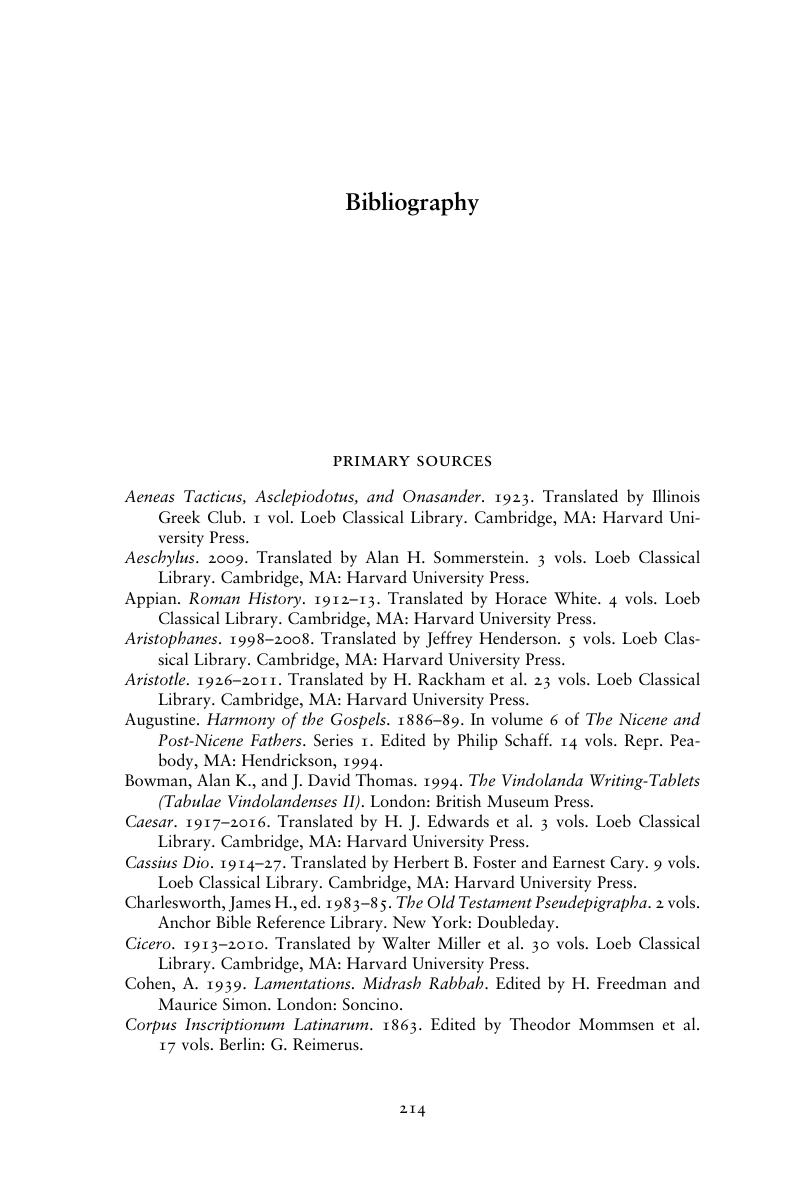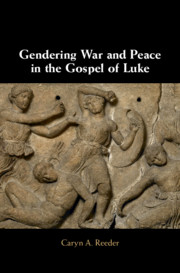Book contents
- Gendering War and Peace in the Gospel of Luke
- Gendering War and Peace in the Gospel of Luke
- Copyright page
- Contents
- Acknowledgments
- Abbreviations
- 1 War and Peace in the Gospel of Luke
- 2 Gender, Age, and the Violence of War
- 3 Facing a Siege
- 4 Ending a Siege
- 5 Women, Children, and the Iconography of Peace and War
- 6 Interpreting War and Peace in the Gospel of Luke
- Appendix The Vocabulary of Siege Warfare in Luke 19:41–44 and 21:20–24
- Bibliography
- Select Index of Scriptural References
- Select Index of the Pseudepigrapha and Rabbinic Literature
- Select Index of Greco-Roman Inscriptions and Texts
- Subject Index
- References
Bibliography
Published online by Cambridge University Press: 12 October 2018
- Gendering War and Peace in the Gospel of Luke
- Gendering War and Peace in the Gospel of Luke
- Copyright page
- Contents
- Acknowledgments
- Abbreviations
- 1 War and Peace in the Gospel of Luke
- 2 Gender, Age, and the Violence of War
- 3 Facing a Siege
- 4 Ending a Siege
- 5 Women, Children, and the Iconography of Peace and War
- 6 Interpreting War and Peace in the Gospel of Luke
- Appendix The Vocabulary of Siege Warfare in Luke 19:41–44 and 21:20–24
- Bibliography
- Select Index of Scriptural References
- Select Index of the Pseudepigrapha and Rabbinic Literature
- Select Index of Greco-Roman Inscriptions and Texts
- Subject Index
- References
Summary

- Type
- Chapter
- Information
- Gendering War and Peace in the Gospel of Luke , pp. 214 - 251Publisher: Cambridge University PressPrint publication year: 2018



